Lasvit: A glass tradition
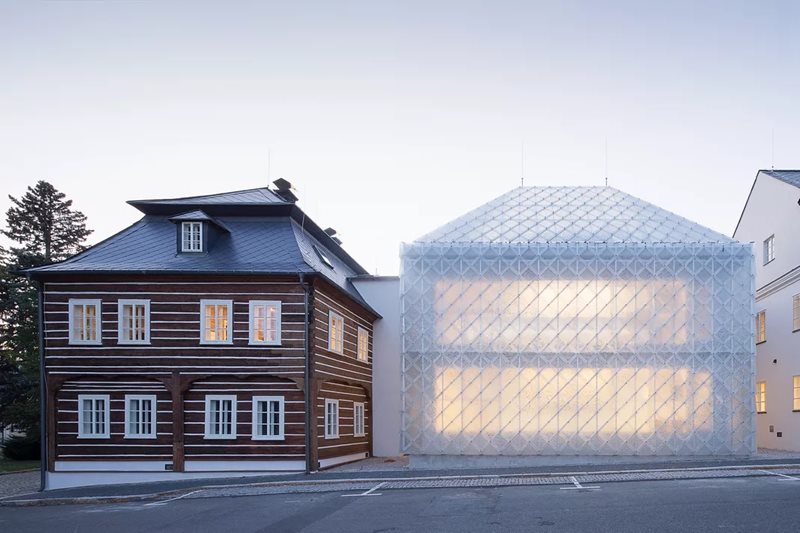
Nový Bor, a town with a long tradition of glassmaking, is home to a Czech Glassworks that has become famous all over the world. The Lasvit building is a masterpiece in combining history with modern design. The second building is an original log cabin. The project won the Czech Architecture Award and the title of Building of the Year 2020.
Helfštýn Castle: the revival of a mediaeval fortress
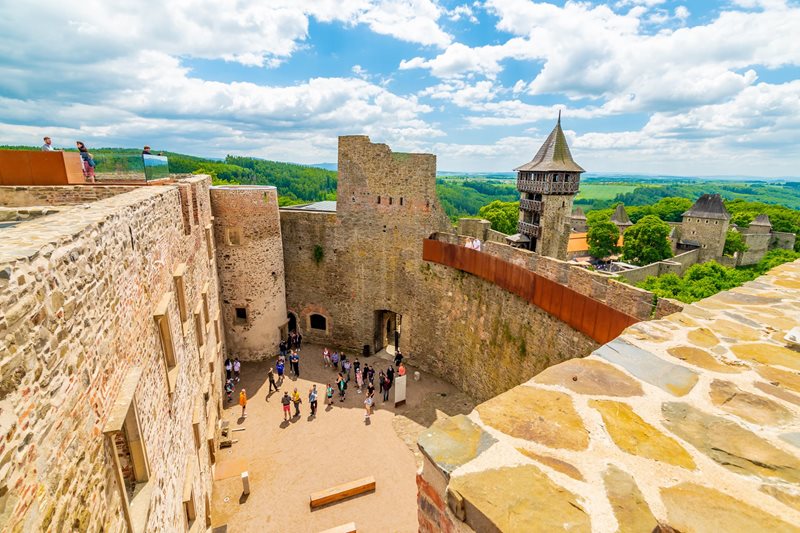
Helfštýn Castle in the country's eastern region is the second largest mediaeval building in Czechia. The castle, which sees artistic blacksmiths gather every year for the Hephaeston festival, boasts a new look. This renovated Czech heritage site has retained its genius loci, while the architects have added a corrosion-resistant steel structure, a glass roof and lighting that combine to create a unique atmosphere. With its partial roof, the castle also now has some interesting exhibition spaces and a unique view.
Dolní Vítkovice industrial complex

The renowned industrial heritage site of Dolní Vítkovice in Ostrava has undergone a fantastic transformation. The former mining complex, including old factory halls, coke ovens and blast furnaces, is now classified as a national cultural monument and in 2008 was one of four Czech sites to be listed as a European Heritage Site. One of the most remarkable projects involved in this transformation is the conversion of a century-old gas tank into the multi-purpose Gong Auditorium. The site is easy to spot from a distance, with the Bolt Tower, the extension of the Blast Furnace with its observation deck and café which, at a height of 71 metres, is the highest geographical point in the city. The multi-genre festival Colours of Ostrava takes place there every year.
Former Salt House in České Budějovice

When you’re in České Budějovice and looking for the most beautiful building in the city, everyone will tell you to check out the Former Salt House on Piaristické náměstí. One of the most picturesque ancient buildings in the Gothic-Renaissance style, it was used to store grain, weapons and later salt. After a tasteful modern renovation, the building now houses a restaurant with a very unusual brewery.
Red Crab as a concert hall
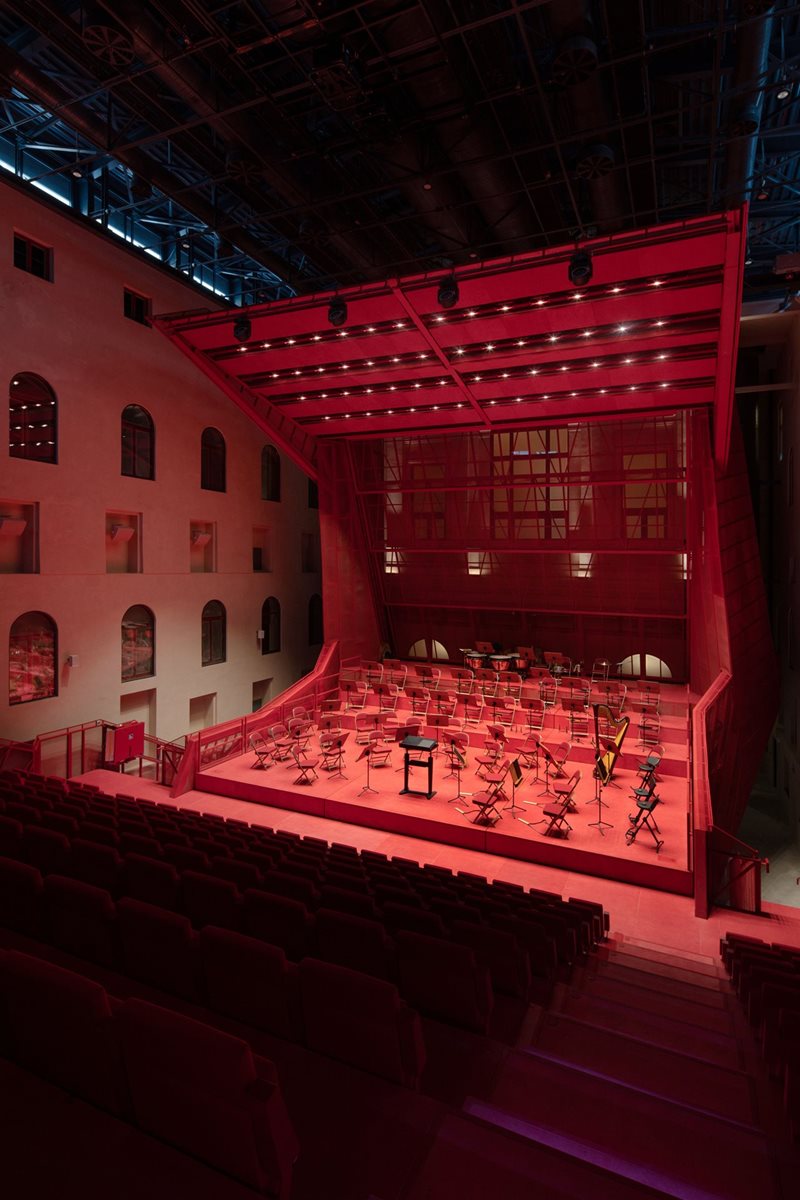
Many years spent renovating the interior of the neo-Renaissance Imperial Baths in Karlovy Vary, one of the most important heritage sites in this spa region, have given the Czech cultural scene a completely unique multi-purpose music venue. This spa building used to house an innovative system that used lifts and internal passageways to deliver baths of healing peat right to the bathrooms. Now, there is an iron structure painted red that, coupled with the variable auditorium and sliding stage, have earned the building the name "Red Crab". The Imperial Baths serve as a social and cultural centre in this beautiful spa town, but you can also take a tour.
Green roofs of the Prague Exhibition Grounds

The renovated roofs of the four Křižík pavilions in Prague, which form part of the Prague Exhibition Grounds next to the large Stromovka Park and the Vltava River, now offer a lovely green place to relax. There are several buffets open on the roof. There is even a tartan track for running or hopscotch on Building B.
Experiential 420 Restaurant

Fancy a completely unexpected culinary experience in the historical centre of Prague? Czech cuisine, the like of which is not cooked by anyone else in Czechia, is served up by Michelin-starred chef Radek Kašpárek at the 420 Restaurant. When you enter the renovated atrium of the House at the Red Fox on Old Town Square, right opposite the Astronomical Clock, you'll see an illuminated statue of John of Nepomuk. Porcelain birds hang from the ceiling, while the plates play host to a culinary spectacle, presenting Czech cuisine as playful and extremely tasty. And those wonderful desserts! Not to mention that there’s a grocery store in the 12th-century Gothic vaulted cellar. Every day they bake their own pastries and make their own sausages there. And why the 420 in the restaurant’s name? That’s the dialling code for Czechia.
Rainbow church

And let’s not forget those modern churches either. Among buildings made of concrete or glass and symbolic ground plans laid out in the shape of a star or a slice of bread, it's well worth checking out the Church of Blessed Mary Restituta in Brno, a futuristic circular structure with a 31-metre-high tower and chimes. Another interesting feature is the rainbow glass under the vault.
A gallery instead of a slaughterhouse
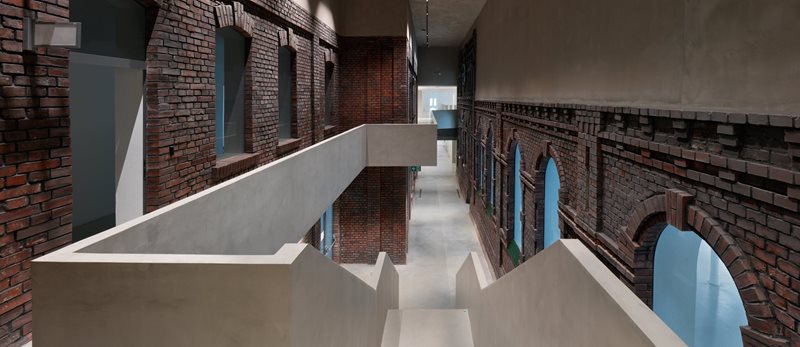
PLATO is an urban gallery of contemporary art in Ostrava, built in the centre of the Silesian metropolis in a former listed city slaughterhouse from the end of the 19th century. The architectural design allows the six walls to be rotated to open up the building on all sides. It also contains a café and a library. The gallery includes a garden that surrounds the building on both sides and is freely accessible.
A hotel wreathed in mythical legends
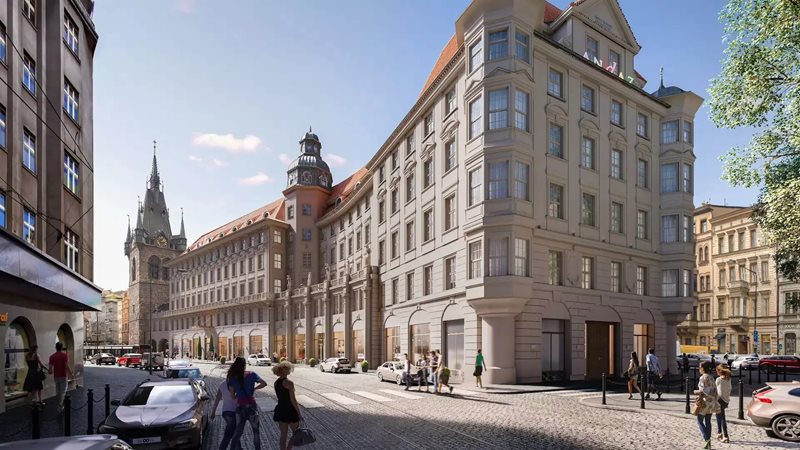
Prague is home to several historical hotels that combine luxury with a rich history. The five-star Hotel Andaz Prague together with Jindřiška Tower is an unmissable landmark in the centre of Prague. The stylish interiors are inspired by myths and legends, such as the story of the Golem, created to protect the Jewish ghetto. On the ground floor of the building there is a showroom with designer porcelain and Czech hand-blown glass.










